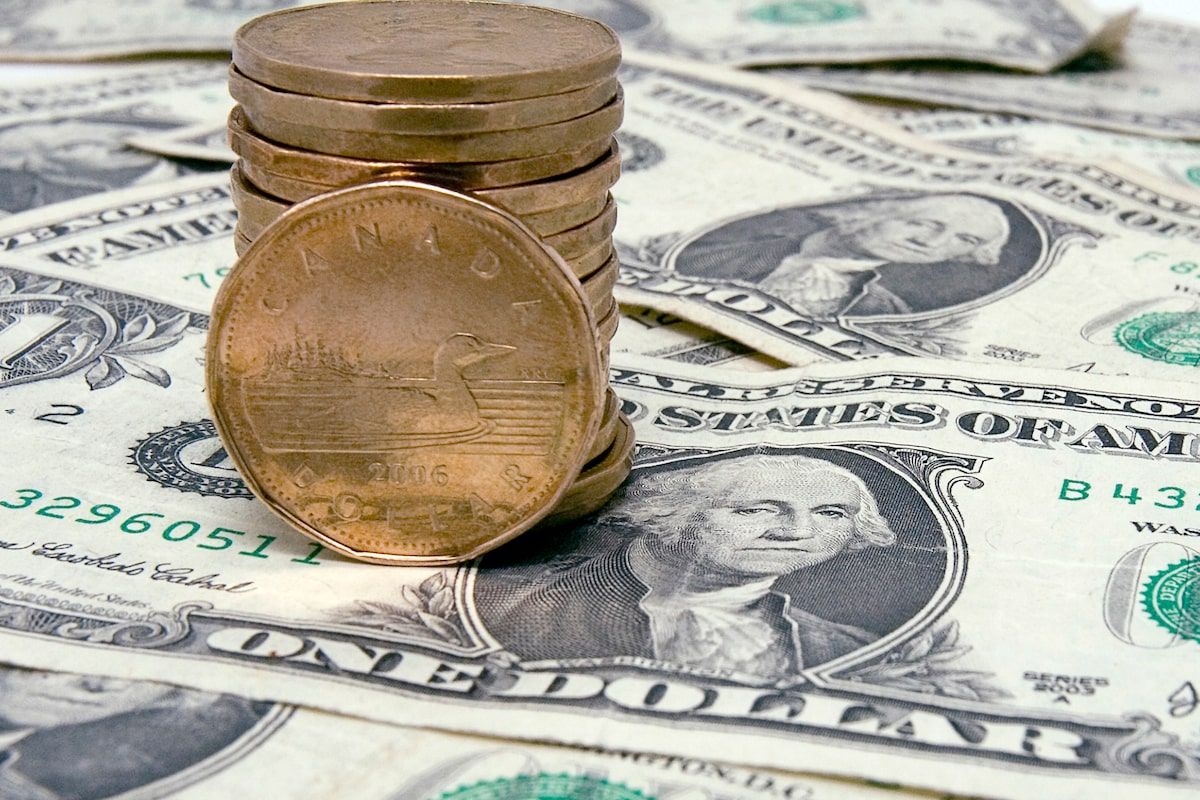
How to exchange money without getting dinged by fees

As the U.S. trade war heat ups and increases pressure on an already battered loonie, some Canadians are wondering if this is a good time to exchange large amounts of Canadian dollars into greenbacks, or vice versa.
You may have some U.S. dollars and want to convert them to Canadian currency at today’s favourable rate. Others may be diversifying part of their portfolios to be denominated in U.S. currency as part of their investment strategy.
Whatever the reason, here’s how to exchange large amounts as efficiently as possible.
When you look up an exchange rate, the first quote you’ll likely see is known as the spot rate. This is the rate that big institutions like banks get when they trade large sums of cash with each other.
However, that’s not the rate that you get when you walk into a bank branch. Every currency has two prices: a buy price and a sell price. This is known as the “forex spread” of that currency. It’s also how your bank makes money – they buy currency at a lower price than the spot rate, then resell it at a higher one.
Let’s see how this works in practice. At the time of this writing, the CAD/USD spot rate is 69.85 US cents per Canadian dollar. I walked into a bank branch and tried to purchase U.S. dollars. The price they quoted was only 68.16 US cents. This represents a 2.5-per-cent forex spread.
Now, this might not be a big deal if you’re only exchanging $100. That spread only costs you $2.50. But if you’re exchanging $1,000, then the cost rises to $25. The more you exchange, the more you pay.
Fortunately, there’s a strategy to exchange large sums of cash without this spread using your trading account. It’s called Norbert’s Gambit. Here’s how it works.
There’s an ETF with the symbol DLR. This is the Global X US Dollar Currency ETF, which is a fund that holds cash in USD. What’s special about DLR is that it’s listed on the Toronto Stock Exchange in two different currencies: DLR (CAD) and DLR.U (USD).
Because the free market, rather than your bank, determines the price of these two securities, DLR and DLR.U trade at the actual exchange rate without a forex spread. So, these funds can be used to exchange any amount of CAD and USD at that better rate.
Let’s say you had $10,000 of CAD that you wanted to exchange for USD. At the spot rate you would get US$6,985, but the bank only gives you US$6,816, meaning you lose US$169 to the forex spread.
Now let’s see what happens with Norbert’s Gambit. As of this writing, DLR is trading for $14.62 per share in Canadian currency. At that price, $10,000 buys you 684 shares.
Now you contact your bank or brokerage and submit a “journaling” request, which transfers your shares of DLR to the USD version, DLR.U. Some banks allow you to submit this request online, others require you to call into customer support. Journaling can take two to four business days to complete.
After your journaling completes, you now have 684 shares of DLR.U sitting in your trading account. At DLR.U’s current price of US$10.21, selling these shares would net you US$6,983.64. This is now only $1.36 off from the spot price, and represents a forex spread of only 0.02 per cent, which is nothing compared with the 2.33 per cent the bank charges.
A few caveats you should know before doing this.
First, it requires your bank or brokerage to support journaling shares. Most, but not all, brokerages support this.
Second, it requires your bank or brokerage to support multicurrency trading accounts. The Big Six Canadian banks all allow this, though you may need to contact customer service to enable it.
Third, there may be a small fee to buy or sell the shares, or to process the journaling request. Questrade, for example, will start charging $9.95 per journaling request starting in April. However, these fees are flat and so don’t change depending on how much you convert. That’s why it makes more sense to use this strategy to convert larger sums.
And finally, journaling takes three to four business days to complete. Your exchange rate is determined when you buy or sell the Canadian-denominated DLR, so if you’re converting CAD to USD, the conversion rate is set immediately when you buy DLR. However, if you’re converting USD to CAD, the rate is determined after the journal completes, so the exchange rate may fluctuate during that time – leaving yourself exposed to the downside if CAD rises during those few days. (On the plus side, you could end up with an even better deal if the greenback goes up.) If you need the money right away, you may have to just suck it up and pay the forex spread.
Even with all these caveats, if you find yourself exchanging large amounts of CAD for USD, learning how to use Norbert’s Gambit could save you hundreds or thousands of dollars in foreign exchange fees over time. And any money saved in fees is money that can be put to better use elsewhere.
Kristy Shen and Bryce Leung retired in their 30s and are authors of the bestselling book Quit Like a Millionaire.